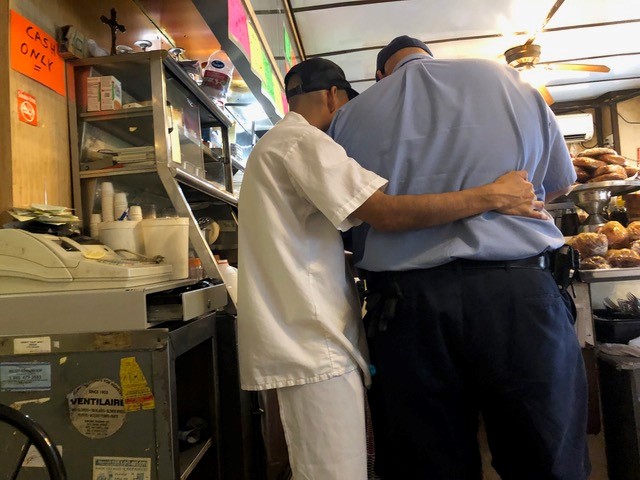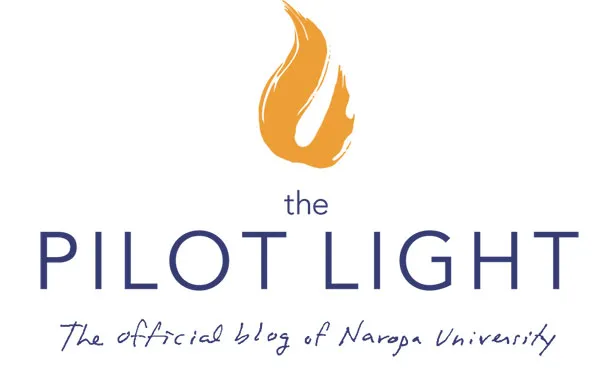
This post is a part of “The Soft Spot,” a section of the Naropa University blog dedicated to compassion from Naropa’s Center for the Advancement of Contemplative Education (CACE).
By Erika Berland, founding faculty and co-creator of Naropa’s MFA Theater: Contemporary Performance Program
We are all such sensitive creatures!
Our nervous systems are designed with an exquisite sensitivity to both our inner and outer environments in order to support homeostasis and respond appropriately to the constant flood of information we receive. In the somatic work I teach, we call this the sensory-motor loop.
The sensory nerves, located throughout our body, feed us a constant stream of information, much of it below conscious awareness; while the motor nerves, also spread throughout our bodies, give us the ability to respond to all of that incoming information. Though the nervous system is quite complex, when we begin to engage in mindful compassion practices, we can become aware of how each of us experiences the sensory-motor loop.
Do we experience it as a continuous flow of receiving and responding or do we tend to freeze or shutdown that natural flow? Perhaps our tendency is to short circuit that process and immediately jump to the “action,” reacting before we have really listened and felt the situation fully. For instance, when I am waiting in line at the check out counter, and the person in front of me is ‘taking forever’ to make their purchase, do I just react with impatience? Or, do I allow myself the time to respond by taking them in fully, their delight in talking to the cashier, their awkward attempts to work the credit card reader, their struggle to get everything loaded into one little bag?
While it is true that our nervous systems must work without our conscious awareness to ensure our basic survival, we also have the ability to bring awareness to the process of listening, feeling, and responding.
All of our perceptions rely on both sensory and motor nerves. To hear, we must be able to receive vibrations through the sensory nerves of the ear. By bringing that to consciousness, we could say we are engaged in “active listening.” To see, the sensory nerves of the eyes must receive light. Bringing conscious awareness to this process might mean allowing a broad, receptive visual focus before narrowing down into a sharp, specific act of looking. Our skin, muscles, and joints are particularly sensitive. When we shake someone’s hand for the first time, are we only intent on the act of vigorously pumping their hand, or do we feel the quality of their touch and respond appropriately, which could mean softly, vigorously, or anything in between?
If we understand empathy to be the ability to “feel others in ourselves,” and compassion to be the active element of responding to our experience of another human being, then bringing the sensory-motor loop to conscious awareness can be a powerful method of changing ingrained patterns of behavior in response to others. When our friend has just told us a painful story, do we allow ourselves to be touched; fully taking in their words, their eyes, the tone of their voice, and then let our perceptions form into a response of care? Can we actively transform what we have taken into a response, even if it is simply wishing them well, letting them know you have heard them or simply putting your hand on their shoulder? There can be a deep satisfaction in completing this cycle of sensing, perceiving, and responding, even when we receive painful information.
To practice the sensory-motor loop, as it relates to physical sensation, try this simple exercise adapted from my book, Sitting: The Physical Art of Meditation.
- Place your hands on your thighs, and feel the sensations in your hands that are stimulated by touching your legs. Perhaps you feel heat, the texture of your clothing—soft or rough, or the nerve endings in your skin tingling as you bring attention to your hands.
- Follow the sensations that occur along the network of sensory nerves, starting from your hands, moving up your arms, across your shoulders, and toward your upper back. Visualize the thread-like nerves entering the back of your spinal cord. Keep increasing your awareness of the sensory nerves as more and more sensory information comes in from your hands.
- Rest for a few moments in appreciation of the sensory nerves as clear pathways of communication, knowing that the sensations being communicated are as vital to your central nervous system as food and water. Without a constant flow of incoming messages from our inner and outer worlds, we would not survive.
- Now bring awareness to where the sensory nerves from your hands and arms enter the back of your spine or spinal cord. You are entering the gateway to the central nervous system. Rest here for a moment and allow any tactile information that comes to just “do its thing.” In other words, trust your perceptions to unfold naturally, creating meaning as the information is relayed to the various centers of the brain. You might say inwardly “Mmm… that feels warm” or “my fingers are tingling.”
- Now bring your awareness to the front of your spine and visualize the motor nerves branching out from your spinal cord to all areas of your body: your organs, muscles, and bones. If a movement occurs as a response, allow it. You might feel the urge to open your arms, or perhaps a little smile curls up the sides of your lips, or your eyes light up, or your heart energy feels like its radiating out. This is the motor phase, the natural desire to express, to communicate, and to engage.
When we are able to bring our awareness equally to all three phases of the nervous system—sensing, perceiving, and acting—we are re-patterning deeply held habits of the body-mind. Fully sensing gives us the ability to receive more information about the present moment and subsequently feel more, physically and psychologically. Paying attention to the place in our bodies where meaning and perception are formed allows us to relax deeply and let go into simply being. Waking up the motor nerves enhances our presence as an engaged being.
When we participate in this process with awareness, the intelligence and sensitivity of our nervous system become a vehicle for supporting our training in empathy and compassion. We are ready to make contact with our world, we are ready to touch and respond to others.



